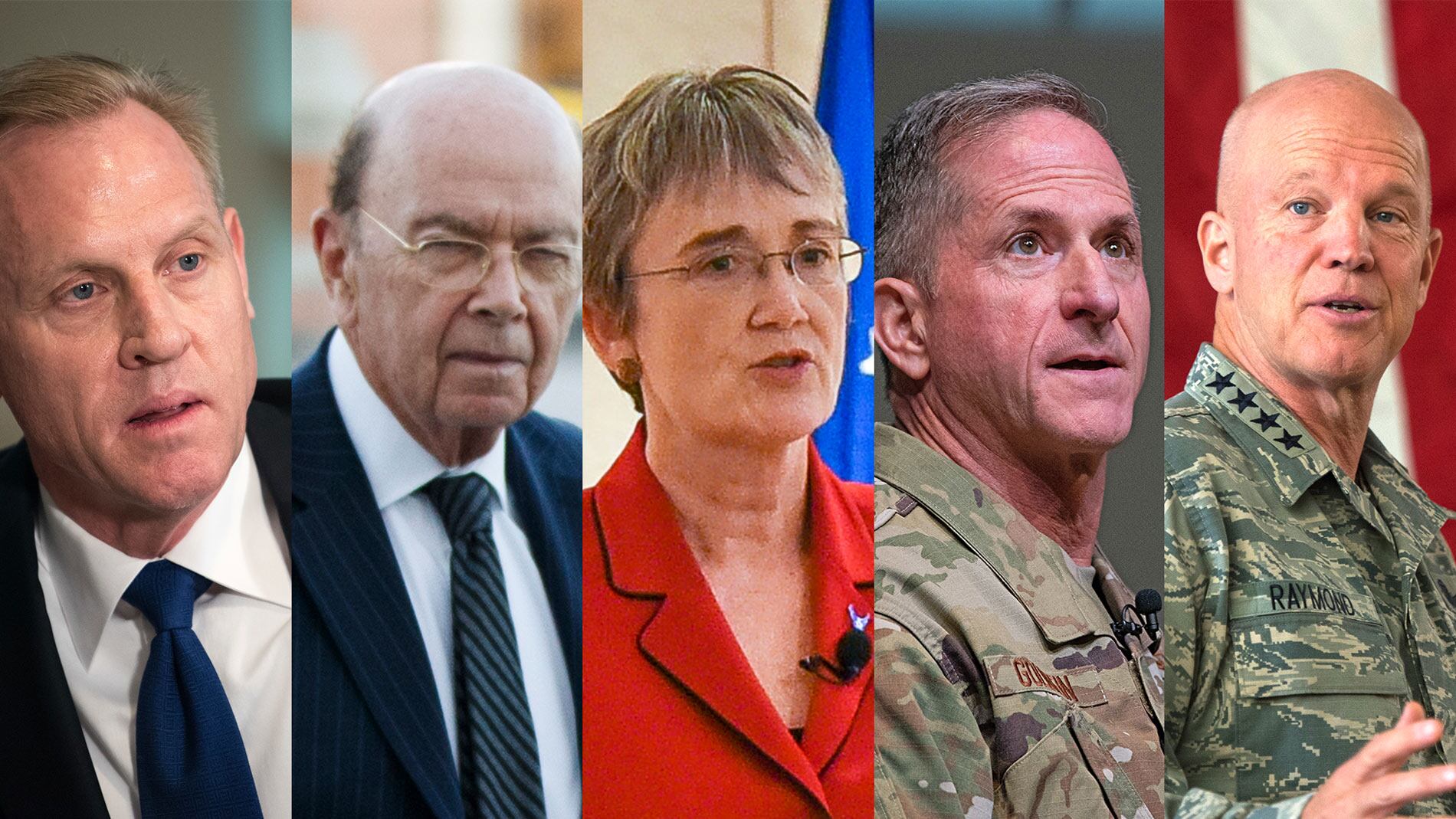WASHINGTON — Acting Defense Secretary Patrick Shanahan on Thursday indicated there could be an integration of the National Reconnaissance Office into the Space Force down the line, despite a decision to leave the NRO on its own for now.
Speaking to the Senate Armed Services Committee about the formation of Space Force, Shanahan was asked by ranking member Jack Reed, D-R.I., why the NRO wasn’t put under the potential new branch of the military. Shanahan’s answer: The Defense Department didn’t want to delay a Space Force while it figures out how to work NRO into the picture.
“The bias in the proposal is towards speed. The proposal we submitted really represents the stakeholders that we have control of,” Shanahan told the committee, adding that technical discussions could “at one point and time” enable an integration between the intelligence agency and the Pentagon.
RELATED

“When we look at the many stakeholders, there is real work to be done there to negotiate. So we thought about it as a multistep process where eventually there would be more alignment, but not in the first phase,” Shanahan added.
The NRO is one of the intelligence community’s most secretive agencies. It runs and operates several classified overhead reconnaissance systems such as satellites. Because the NRO’s budgets are classified, little information is publicly available about individual programs. However, intelligence leaders have said the agency makes up about half of the intelligence community’s major acquisitions and has about 3,000 employees.
Sen. Deb Fischer, R-Neb., followed up on Reed’s question, asking whether Shanahan saw a need for NRO to fall under Space Force, to which Shanahan responded: “There is a need. It was an issue of timing. If we could do it all concurrently, that would be ideal. I don’t think we can move that quickly, so, rather than delay, we said: ‘This is what we can do immediately.' "
Secretary of the Air Force Heather Wilson noted that there is a “deep, organic connection” between her service and the NRO, with about 40% of NRO staff coming from her service. But she sounded skeptical about rolling NRO under Space Force, saying that while “deepening that connection is important,” strengthening their relationship "may not require an actual structural change in the organizational chart.”
And Gen. John Hyten, the head of U.S. Strategic Command, added that “there’s no doubt the Space Force of the future will have to have a very strong relationship with the National Reconnaissance Office." STRATCOM owes a report to Congress in August about how to better partner with the NRO, something he said he hopes to deliver ahead of schedule.
After the hearing, Reed stopped short of saying he wanted to see the NRO integrated into any Space Force, but said he was making a larger point.
“This proposal doesn’t represent a comprehensive integration of space assets since the NRO is another important part of it, and they have no intention of pulling that in,” Reed said of the Trump administration.
Reed said he and other lawmakers would have to consider the range of information presented and ultimately consider it as they draft this year's defense policy bill, which is the likely legislative vehicle for any reorganization of military space assets.
For now, Reed signaled he favors an arrangement wherein the commander for space is in a dual-hat role, along the lines of the head of U.S. Cyber Command and the National Security Agency.
“That’s an alternate model that might work better if you’re really looking at a full integration of space assets,” Reed said.
Aaron Mehta was deputy editor and senior Pentagon correspondent for Defense News, covering policy, strategy and acquisition at the highest levels of the Defense Department and its international partners.
Joe Gould was the senior Pentagon reporter for Defense News, covering the intersection of national security policy, politics and the defense industry. He had previously served as Congress reporter.








